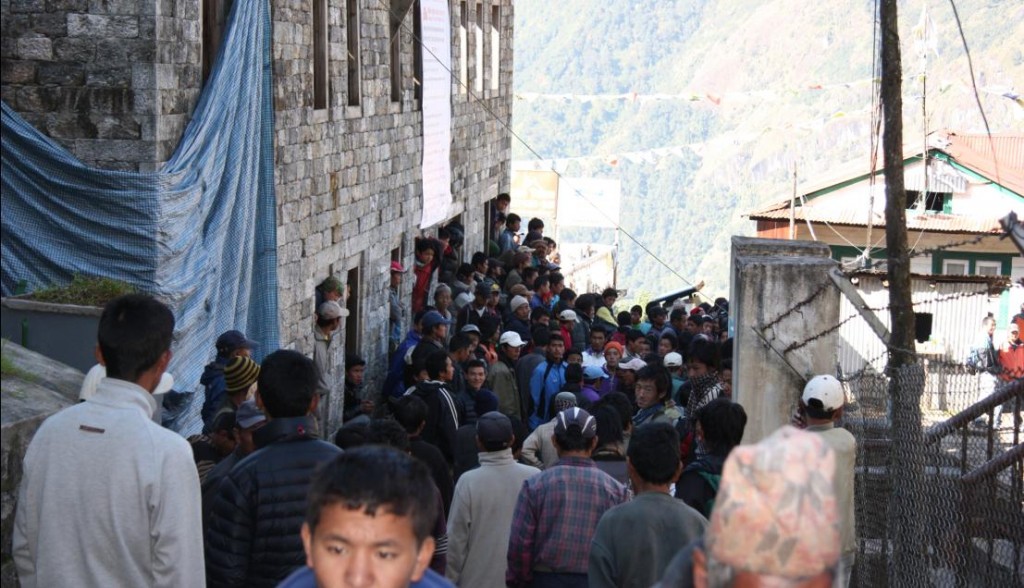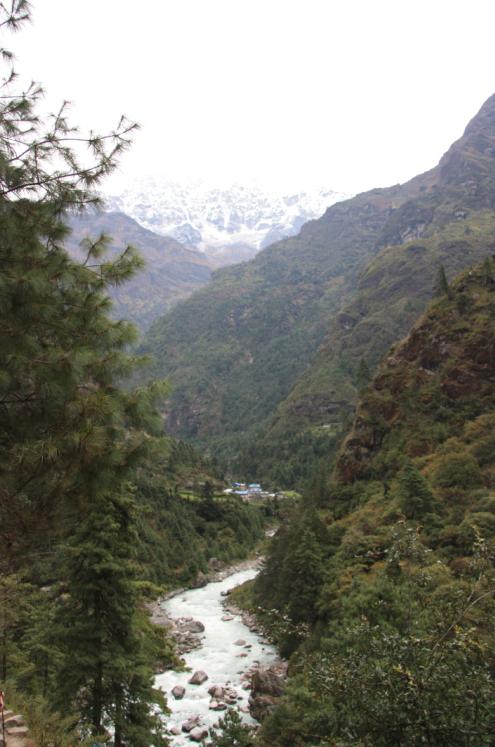First I would like to kindly thank Sucheta for letting me write a guest entry on her blog! I recently met Sucheta in Nepal where I was re-visiting VIN (Volunteers Initiative Nepal) whom I worked for last year. This year I set up a partner foundation called Friends of VIN (visit our newly launched website Friends of VIN) and I was in Nepal to catch up with VIN’s founder Bhupendra Ghimire and to check out our new project location in a remote area and rural area of Nepal; Okhaldunga.
But let’s briefly rewind to 2008 – it was a leap year…and the reason I remember so clearly is that this was the year where, on February 29, I proposed to my then boyfriend. Only 2 weeks prior had I heard about this old tradition of women being “allowed” to propose on this day. It’s believed to originate from Ireland in the 5th century when St. Bridget complained to St. Patrick about women having to wait so long for a man to propose. Tradition has it that in case the woman’s proposal was rejected, she would receive 12 pairs of gloves – so I thought: what the heck – I have nothing to lose!
Two and a half years later – July 2010 – we got married on a boat in Amsterdam– and it was a fantastic day!
We discussed a couple of options for our honeymoon – We wanted something out of the ordinary – not the Maldives or any other luxury beach holiday. So we came up with the South Pole on an old Russian expedition ship or trekking in Nepal…and since my husband knows how much Nepal means to me and since our very first conversation included Nepal, he wanted to experience it with me. And there was an extra bonus for me – my lifelong dream of working in Nepal as a volunteer would also come true.
We were greeted at the airport by Raju Shrestha – co-owner of the travel agency Himalayan Rejoice with whom we had booked our trip. The first days involved sightseeing of many of the famous sights in Kathmandu; the Swayambhunath Temple (also called the Monkey Temple – guess why…), the Boudhanath Stupa, the Kumari’s (Nepal’s living Goddess) Palace, and Durbar Square.
We rose early to go to the airport as we were on the first flight to Lukla. The airport terminal for domestic flights was quite chaotic compared to European standards…a lot of shouting and waving of tickets in the air – there was no check-in line; it was sort of just a lot of trekking tourists with sleepy looks in their eyes huddled in pairs or groups while their trekking guides were trying to get all the luggage checked in.
Finally we were on the plane – but ended up waiting outside on the tarmac as we couldn’t take off due to the mist in the valley. This is quite a common phenomenon in Nepal – and it means that many flights are delayed or cancelled. So if you are planning on going trekking in the Everest region and want to fly in to Lukla, you should give yourself a couple of days at each end of the trek to allow for changes to your flight schedule. Or maybe you don’t want to fly into the world’s most dangerous airport, but will opt for a 7-10 hour bus ride to Jiri and then start walking…In the beginning of November this year, around 3,000 trekkers were stranded in Lukla because no planes could leave or arrive for the matter due to bad weather.
Seemingly randomly, our guide found a porter that he already knew – among hundreds of men. It’s amazing how that worked. Our porter works independently meaning not through a travel agency and doesn’t own a mobile phone, so I guess we were lucky that he wasn’t on another job…
And then…After a hearty breakfast of potatoes and chili we take the first steps of the first meters of many thousands. It is like we have landed somewhere in the 1700s; cows, chicken, yaks and dogs are running among the many children who are chasing the animals with wooden sticks or playing in the shade. Men are carrying heavy loads of everything ranging from firewood to dirt to bags of rice on their backs. Women are busy tending to their farms and household chores, washing the dishes at the public water pipe or taking a shower – also at the public water pipe. A stark contrast to our urban lives back home in Amsterdam.
The route takes us through beautiful greenery and sounds of people and animals. Every now and again we come face to face with a yak train – which of course has the right of way. You can always hear them coming by the sound of the bells dangling from their necks and it’s important to go towards the mountain so that you don’t get pushed off the cliff accidentally…the yaks are carrying goods to the villages higher up as well as trekkers’ backpacks.
We pass many shrines and stupas which you must always walk around clockwise. We also pass many Buddhist prayer wheels and you are encouraged to spin them as you pass. In this way, the prayers are spun out to the universe and will save you from chanting them. In the distance we see lush forest rising high up until they eventually meet the raw grey and brown mountains with their snow-capped peaks which will dot our horizon over the next couple of weeks.
As you would expect we meet our first ascent of many and for about an hour our legs (and lungs) are given a good work-out – far better than any gym can offer. And the views are just stunning, the fresh air sweet and soothing, so much better than the Kathmandu smog and dust.
More coming…
~ By guest blogger, Ann Wilson. Ann is founder and CEO of Friends of VIN. She lives in Netherlands with her husband and travels to Nepal every chance she gets. To support Friends of VIN, visit www.friendsofvin.nl

